#eleonor magdalene of neuburg
Explore tagged Tumblr posts
Text

Portrait of Archduchess Maria Magdalena of Austria, youngest surviving daughter of Leopold I and his third wife, Eleonore Magdalene of Neuburg.
#Eleonore Magdalene of Neuburg#leopold i#Maria Magdalena of Austria#house of habsburg#habsburg#archduchess#long live the queue
22 notes
·
View notes
Text

Jakob Heybel - Emperor and Empress surrounded by European princes and princesses.

#visual#habsburg#kaiser leopold i#emperor leopold i#idk if there is another emperor leopold from another empire i am sorry if that its the case#genuinely crying about this painting this is so funny#im not tagging everybody here but. funny game how many people do you recognize iii i think i recognize 16 people. maybe 17 but i am not sur#i genuinely think the guy who seem to be louis xiv at the top#its philippe but they painted him like louis xiv no reason for this#but i dont know i dont recognize him either way#wittelsbach#eleonore magdalene therese of neuburg#i dont think nobody is a fan of the wittelsbach dynasty
1 note
·
View note
Text
Someone should truly speak bout the “later wife effect” that seems to have haunted historical figures since times long forgotten.
To break it down to you, what I call the “later wife effect” occurs when a male historical figure suddenly looses his beloved wife (most of the times, his first one) in an untimely and tragic manner -either by a childbirth gone wrong, an accident or a sudden illness-, turning the once mirthful husband into a grief-stricken widower. Perhaps because he lacks succession from said wife, because he has to provide spares to his heir, or even because an alliance is needed, he is forced to marry again; but the love never arises fully, their marriage turns into a bound of duty, and no matter what she does, or how loved she is outside their marriage: the later wife will forever be under the shadow of the first, a perfect idol, immortalised by her early death.
The “later wife effect” knows various levels:
In 1673, Leopold I, Holy Roman Emperor, lost his beloved Margaret Theresa when she was yet to turn twenty two and with child. Their seven years of union had produced four children, but only a daughter lived when Margaret Theresa died, and he went on to marry twice again; and even though he would sorrowfully remark that neither Claudia Felicitas of Austria or Eleonore Magdalene of Neuburg, his following brides, were “not like my only Margaretha”, his marriages were remarkably happy and so was he. This could be one of the mildest examples.
The middle ground would be when the marriage with the later wife is dutiful and polite, but loveless. Frederick William II of Hesse married Alexandra Nikolaevna, but soon lost her due to complications of childbirth. He would remarry nine years later to the beautiful and lively Anna of Prussia, and even though they eventually had six children, their marriage was notably cold and unhappy. Leopold I of Belgium widowed of his wife, Charlotte of Wales, soon after she gave birth to a dead son; fifteen years later, know king of Belgium, he took Louise-Marie of Orléans hand in marriage; she was shy, delicate, witty and partook in many charitable causes, earning the love of the Belgians, and the respect of her husband, with whom she had a fruitful and tranquil union; but Leopold would not be faithful to her, committing adultery with a much younger Arcadie Claret, who was said to resemble the long gone princess Charlotte. She perished a year after he had a son with Claret, and her dead did not stop the relationship between the two of them.
More unhappy cases of this effect would be those of Maximilian I, Holy Roman Emperor, and his descendant, Joseph II. When still an archduke, Maximilian married Mary of Burgundy and loved her much, a love so legendary it lived through generations in the art commissioned by their descendants. But the fairytale would come to an abrupt end when, after five years of marriage, Mary would find her untimely dead while pregnant with their fourth child, after her horse threw her off the saddle. Maximilian was most heartbroken and, after a failed marriage attempt with the young duchess Anne of Brittany, he would wed Bianca Maria Sforza. The empress from Milan was deemed “more beautiful than Mary” by Maximilian, but neither her beauty not her many charms of her would soften his callous attitude towards his wife. Having endured a miscarriage during the first months of their union, Bianca Maria, the once most sought after princess in Europe, had become a ghost in her own court, severely neglected by her husband, who refused to attend to her own funeral nor dedicate a gravestone for her. Similarly, after the traumatic passing of his wife, Isabella of Parma, Joseph II was forced to remarry to Maria Josepha of Bavaria, who he did not found as attractive as the late archduchess. He grew so disgusted of her that the same devoted husband that has been by Isabella’s bedside now commanded to put a wall between his balcony and hers, so that he could not see her, distressing old servants in the palace so much with his cold attitude that some left. When, after two years of marriage, her life was robbed by smallpox -the same ailment that had taken Isabella’s life four years before-, Joseph declared she had been worthy of respect and that he repented his coldness. However, he refused to visit her bedside and did not appear during her burial.
This should not be confused with what I call “the younger wife effect”, which takes place when a widowed historical figure, who had long remained unwed by choice, suddenly takes marriage to a beautiful and much younger person that is described to bring happiness to his once lonely and dull life. This would perfectly be exemplified with prince Maximilian of Saxony’s marriage with princess Maria Luisa Carlota of Parma, almost twenty one years since the passing of his wife (princess Carolina of Parma).
13 notes
·
View notes
Note
I came back for more habsburg talk . as usual ) not actually invested in spanish habsburgs but i really like the austrian ones .
Opinions about Maria Anna of Neuburg ? I actually really love her sister Eleonore Magdalene ( mainly known as the wife of Leopold I ) , she was so cool
Are you into Habsburgs apart from the classics™ . My favourite one is Francis II and Joseph II ... but eh i just guessed you were more into very early modern monarchs only ?

His second wife was Maria Anna or Mariana of Neuburg (she has the same name as Mariana of Austria, I wonder how they detour confusion every time someone pronounces their name)
Charles tried his best to respect her but Maria Anna was Selfish, ambitious, cold, and harsh. She cared more about her political ambition than Charles. She was only nice to Charles in public or when she needed something which led Charles to dislike her instantly. Maria Anna bonded with Mariana of Austria at first but that relationship quickly soured. These two have opposite views in terms of politics and personality. Maria Anna was jealous of her sister Eleonore Magdalene, She expressed her jealousy in her letters and complained to her parents how she wanted a bigger dowry, especially after finding out that Marie Louise of Orleans received a higher dowry than her. Her parents responded by telling her that Marie Louise had a bigger dowry when she was alive because her family is more powerful than theirs and if she wanted a bigger dowry, she must have a son. Maria Anna liked Leopold the first and always complimented him in her letters. The country at that time was suffering economically because of the Little Ice Age resulting in failing crops. Maria Anna stole expensive jewelry and money from the Royal treasury which made both Queen Mariana and Charles furious. She demanded a higher pension. Her attitude was unbearable for everyone. She was forced to sell her jewelry for the loans she owed and to maintain her luxury lifestyle. As years passed by Maria Anna failed to be pregnant. She was claimed to be pregnant on different occasions but no she never did. Charles then gave up hope for a child. Maria Anna’s and Queen Mariana's fights got worse, To the point that they personally insulted one another. In one of these fights, Maria Anna jabs personal insults at Queen Mariana, Queen Mariana responds by reminding Maria Anna that she became queen because of her. That fight was so heated that Charles had to interfere to defend his mother from her. In 1696, Charles’s mother Mariana of Austria passed away devastating him. For Maria Anna, She was happy because no one would interfere with her plans or she thought. With the death of Queen Mariana of Austria, Maria Anna now advanced into the political foreground. However, the Spanish court rejected her. After Mariana of Austria's death, she tried to distance Charles from his ministers and insert her influence on him. Charles and Maria Anna often argued about the succession. She wanted Archduke Charles (Leopold I's son) Her policies were not great resulting in riots in Madrid. The rioters entered the palace hoping to see the King and address their situation. She went to the balcony to address the people yet they did not listen. Charles II went to the balcony and the people apologized and asked him for forgiveness. Charles II responded "I apologize to you for not knowing your suffering much former"
Maria Anna and Charles contracted an illness resulting in them having to shave their heads and wearing wigs.

After Charles II died, she was exiled by Louis XIV in Bayonne. Louis XIV exiled her because Louis did not want her to have influence on Felipe V. She negotiated with Archduke Charles during the war of Spanish succession. Her years of exile are filled with loneliness. Maria Anna during those years felt alone. During her exile, she encountered her niece Elizabeth of Farnese. Her friendship with her niece was nice to read. She would give Elizabeth Farnese advice and express her concerns in letters. This friendship resulted in her returning to Spain where she gets to spend the rest of her life. Overall I feel bad for her because she was blamed for not providing Charles an Heir. At the same time, I did not like how she treated people, especially Charles. The only thing I like about Maria Anna is loyal to Charles and never sleeps with anyone else. She took care of him when he was ill.
2. I am into Habsburgs apart from the classics my favorites are Maria Theresa of Austria (Marie Antoinette's Mother), Marie Louise (Napoleon's second wife), and Joseph II (Maria Theresa's son, Empress Elizabeth or Sisi
#history#house of habsburg#maria anna of neuburg#maria theresa of austria#joseph ii#empress sisi#austria#carlos ii#update#blog update
13 notes
·
View notes
Photo

Eleonore Magdalene of Neuburg (6 January 1655 – 19 January 1720) was a Holy Roman Empress, German Queen, Archduchess of Austria, Queen of Hungary and Bohemia as the third and last wife of Leopold I. Before her marriage and during her widowhood, she led an ascetic and monastic life, translating the Bible from Latin to German and defended the Order of the Discalced Carmelites. Reputed to be one of the most educated and virtuous women of her time, Eleanore took part in the political affairs during the reign of her husband and sons, especially regarding court revenue and foreign relationships. She served as regent for a few months in 1711, period in which she signed the Treaty of Szatmár, which recognized the rights of her descendants to the Hungarian throne.
#Eleonore Magdalene of Neuburg#House Habsburg#XVII century#XVIII century#people#portrait#paintings#art#arte
2 notes
·
View notes
Photo
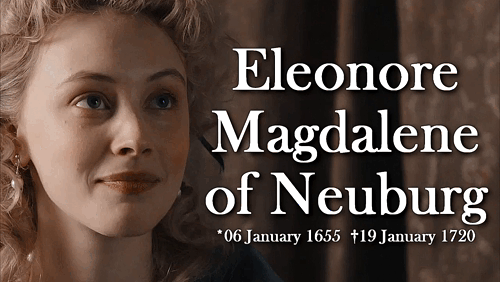

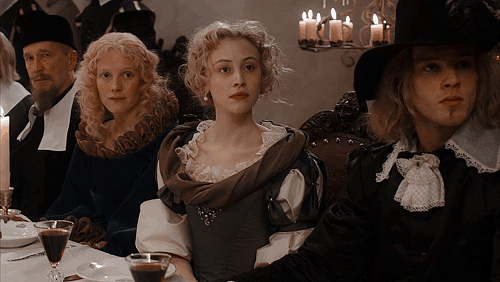
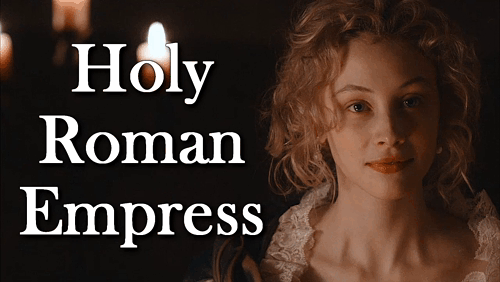
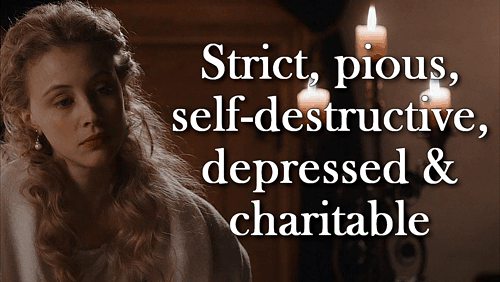

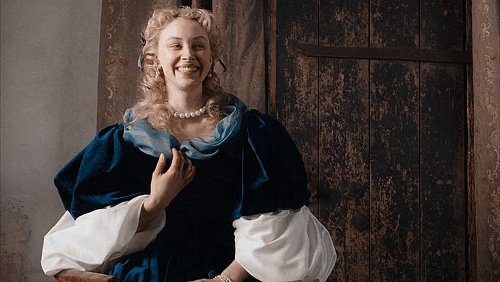
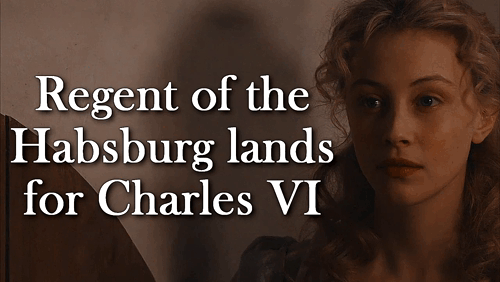
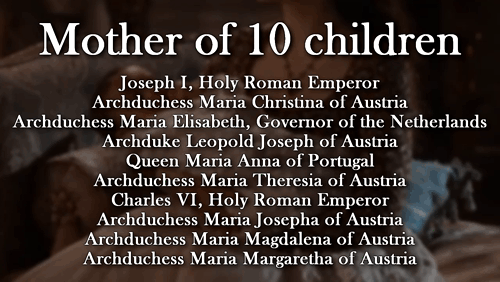
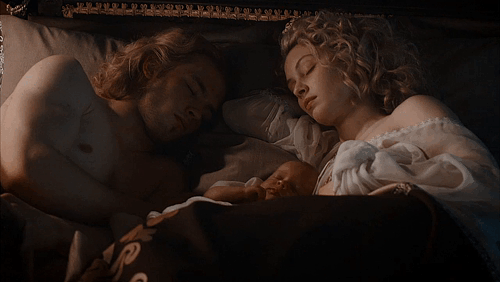
House of Wittelsbach & of Habsburg: Eleonore Magdalene of Palatinate-Neuburg aka Eleonore Magdalene of Neuburg
Eleonore was born as the first of 17 children to Philip William, Elector Palatine, and his wife Princess Elisabeth Amalie of Hesse-Darmstadt. In English, she is usually referred to as Eleonore Magdalene of Neuburg but her full German name was actually Eleonore Magdalene of Palatinate-Neuburg. Through her son Charles, she was the paternal grandmother of Maria Theresia, Holy Roman Empress and The Archduchess of Austria, and Archduchess Maria Anna, Princess of Lorraine and Bar.
By contemporaries, she is described as a stirct and pious woman who actually rather wanted to become a nun than an empress. She had received an eduaction in serveral language and art, poetry and music. From a very early age, she showed interest in religious scriptures and studied them eagerly. Eleonore became so obsessed with religious that she denied herself any real joy and even tended to have self-destructive tendencies. For examples, she had spikes installed inside of her bracelets as tool of penance and only visited the opera when her husband asked her to. However, she was beloved among the common people whom she asked during her visits to treat her as one of their own.
Eleonore tried to avoid a marriage at all costs. She denied many suitors, among them King James II and VII of England and Scotland. However The Emperor lost his second wife in the spring of 1676. Eleonore’s family was known for their fertility, she herself had 16 siblings, and The Emperor was in need of a male heir. Eleonore nevertheless tried to boycott the marriage, her father had so carefully arranged, by sunbathing until she got a sunburn the day before the Emperor would see her for the first time. However that did not work and Eleonore and Leopold I. were married on December 14th, 1676.
The marriage resulted in 10 children, among them two Emperors, a Lady Governor of the Netherlands and a Queen of Portugal. Eleonore was also devoted to her husband and took care of him in his last months. Furthermore, she served as his translator for French documents since he was unlike her unable to speak or read any French.
When her oldest son died, Eleonore acted as regent of the Habsburg lands until her youngest son Charles VI who resided and ruled over Spain during that time, returned to Austria. During her regency, she demanded all the gifts the mistress of her elder son had received back and also fired the mistress’ brother from his courtal position. Furthermore, Eleonore signed the Treaty of Szatmár, which recognized the rule of the House of Habsburg in the Kingdom of Hungary. Lastly, Eleonore presided over the congress to determine the succession and election of a new Emperor, and favoured the election of Charles as Emperor.
Eleonore lived her last years as a nun. However, she had instructed her servants to never tell this to anyone. On January 1st, 1720, she suffered a stroke while preparing for confession. This left her paralyzed on the right side of her body. Her daughters-in-law, Princess Wilhelmine Amalia of Brunswick-Lüneburg and Princess Elisabeth Christine of Brunswick-Wolfenbüttel, nursed her in her final days. Eleonore Magdalene died 19 days later and was buried four months later in the Imperial Crypt in Vienna.
// Sarah Gadon in The Girl King (2015)
#women in history#historic women#European history#17th century#historyedit#German history#holy roman empress#House of Habsburg#1600s#Royal Women of Austria#House of Wittelsbach#Austrian history#fancast#Eleonore Magdalene of Neuburg
213 notes
·
View notes
Photo

Franz Stampart - Portrait of emperor Joseph I - 1805
Joseph I (Joseph Jacob Ignaz Johann Anton Eustachius; 26 July 1678 – 17 April 1711) was Holy Roman Emperor from 1705 until his death in 1711. He was the eldest son of Emperor Leopold I from his third wife, Eleonor Magdalene of Neuburg. Joseph was crowned King of Hungary at the age of nine in 1687 and King in Germany at the age of eleven in 1690. He succeeded to the thrones of Bohemia and the Holy Roman Empire when his father died.
Joseph continued the War of the Spanish Succession, begun by his father against Louis XIV of France, in a fruitless attempt to make his younger brother Charles (later Emperor Charles VI) King of Spain. In the process, however, owing to the victories won by his military commander, Prince Eugene of Savoy, he did succeed in establishing Austrian hegemony over Italy. Joseph also had to contend with a protracted revolt in Hungary, fomented by Louis XIV. Neither conflict was resolved until the Treaty of Utrecht, after his death. He also sanctioned the extermination of Romani people within the Holy Roman Empire.
His motto was Amore et Timore (Latin for "Through Love and Fear").
During the smallpox epidemic of 1711, which killed Louis, le Grand Dauphin and three siblings of the future Holy Roman Emperor Francis I, Joseph became infected. He died on 17 April in the Hofburg Palace. He had previously promised his wife to stop having affairs, should he survive.
Frans van Stampart (born in Antwerp 12 June 1675 – died 3 April 1750 in Vienna) was a Flemish portrait painter, printmaker and publisher. The artist established a reputation as a portraitist of European rulers, aristocrats and higher clergy. He had an international career, which brought him to the court in Vienna where he worked as court painter of the Imperial court. He is also known as the co-publisher of two publications with reproductions of the Imperial art collection in Vienna for which he also made some of the engravings
23 notes
·
View notes
Text
Maria Anna de Áustria, Queen of Portugal (Wife of King João V of Portugal)

Tenure: 27 October 1708 – 31 July 1750
Maria Anna of Austria (7 September 1683 – 14 August 1754) was Queen consort of Portugal by marriage to King João V of Portugal. She was Regent of Portugal from 1742 until 1750 during the illness of João V.

Born Maria Anna Josepha, she was a daughter of Holy Roman Emperor Leopold I

and Eleonor Magdalene of Neuburg.

Maria Anna was a sister of Holy Roman Emperors Joseph I

and Charles VI.

Through her brother Charles, she was an aunt of Maria Theresa,

Austria's only queen regnant.
On 27 October 1708 Maria Anna of Austria married João V, King of Portugal to seal the alliance between the two countries against Bourbon France and Spain during the War of Spanish Succession. She was subsequently Queen of Portugal until his death on 31 July 1750. During her queenship, she acted as regent during times of her husband's illness.
Once she was head of her household, Maria Anna reformed her court and its customs to follow the traditions and customs of the traditional Queens of Portugal. Her greatest influence on the court, and Portuguese nobility as a whole, was the increase of segregation between men and women, as well as between servants and masters. Like João, Maria Anna had an exuberant taste, and this was best shown in her famous parties. Often lasting several days, she would invite the nobility from all over the country and hold a magnificent festival, often in concurrence with a saintly holiday, though religion played a small part in her parties.
In 1742 Maria Anna took over power as regent after her husband suffered a stroke, which left him partially paralyzed. When João V died on 31 July 1750, she gave up power to their eldest son José I of Portugal.
She died while in residence in the Palace of Belém

in 1754. After her death, she was buried in Lisbon,

but her heart was brought to Vienna and buried there in the imperial crypt.
She was the mother of six children:
Barbara of Portugal (4 December 1711 – 27 August 1758), married Fernando VI of Spain, no issue.
Pedro of Portugal (19 October 1712 – 24 October 1714), Prince of Brazil, died in infancy.
José I of Portugal (6 June 1714 – 24 February 1777), married Mariana Victoria of Spain.
Infante Carlos of Portugal (2 May 1716 – 1 April 1736), died in infancy.
Pedro III of Portugal (5 July 1717 – 25 May 1786), married Maria I, Queen regnant of Portugal.
Infante Alexandre of Portugal (24 September 1723 – 2 August 1728), died in infancy.
13 notes
·
View notes
Photo

#OnThisDay 1st 📸 - Year 1650, Birth of Duke Juan Manuel Fernández, Duke of Escalona, Marquess of Villena, 12th Count of San Esteban de Gormaz, 8th Count of Xiquena was the son of Diego López Pacheco, 7th Duke of Escalona (1599–1653) and his second wife Juana María Francisca de Zuñiga (died 1652). a Spanish aristocrat, politician, and academician who founded the Royal Spanish Academy. He served as Mayordomo mayor to the king, viceroy, and captain-general of the Kingdoms of Navarre, Aragon, Catalonia, Sicily and Naples, and, on 9 October 1687, was awarded the title of Knight of the Order of the Golden Fleece. 2nd 📸 - Year 1683, Birth of Maria Anna of Austria. was Queen consort of Portugal by marriage to King John V of Portugal. She was Regent of Portugal from 1742 until 1750 during the illness of John V. Born Maria Anna Josepha, she was a daughter of Holy Roman Emperor Leopold I and Eleonor Magdalene of Neuburg. Maria Anna was a sister of Holy Roman Emperors Joseph I and Charles VI. Through her brother Charles, she was an aunt of Maria Theresa, Austria's only queen regnant. On 27 October 1708 Maria Anna of Austria married John V, King of Portugal to seal the alliance between the two countries against Bourbon France and Spain during the War of Spanish Succession. She was subsequently Queen of Portugal until his death on 31 July 1750. During her queenship, she acted as regent during times of her husband's illness. #RoyalHistory #HistoryofRoyals #RoyalBirth #JuanManuelFernandez #MariaAnnaofAustria #Monarchy #EuropeanRoyalties https://www.instagram.com/p/CTg5ZN3lpet/?utm_medium=tumblr
#onthisday#royalhistory#historyofroyals#royalbirth#juanmanuelfernandez#mariaannaofaustria#monarchy#europeanroyalties
0 notes
Text
Classical Music News of the Week, July 29, 2017

Ars Minerva Presents "La Circe" Sept 8, 9 at ODC Theater
Ars Minerva, a San Francisco-based arts nonprofit organization, presents Pietro Andrea Ziani's "La Circe," September 8 and 9 at the ODC Theater. Directed by Founder and Artistic Director of Ars Minerva Céline Ricci, this performance marks the first time the opera has been performed since its creation in 1665.
The "La Circe" manuscript, which resides at the Biblioteca Marciana in Venice, is attributed to Pietro Andrea Ziani (1616-1684) with a libretto by Cristoforo Ivanovich (1620-1689). Ziani was the organist at St. Mark's Basilica in Venice and served the Holy Roman Empress, Eleonor Magdalene of Neuburg, in Vienna later in his life. Ivanovich was the first historian of Venetian opera and was a librettist for several operas performed in Venice, Vienna and Piacenza. He catalogued all opera performances held in Venice from 1637 until 1681 in his treatise Memorie teatrali di Venezia published in 1680 as part of collection Minerva al tavolino.
To read the complete Classical Music News of the Week, click here:
https://classicalcandor.blogspot.com/2017/07/classical-music-news-of-week-july-29.html
John J. Puccio, Classical Candor
0 notes
Photo

The marriage of Leopold I and his third wife, Eleonor Magdalene of Neuburg.
#Eleonor Magdalene of Neuburg#leopold i#holy roman empress#holy roman emperor#austria#long live the queue
30 notes
·
View notes
Photo

Empress Eleonor Magdalene of Neuburg
Eleonor Magdalene of Neuburg was born the year 1655 on January the 6th. She was the oldest daughter of Philip William, Elector Palatine and his wife Elisabeth Amalie of Hesse-Darmstadt. Though Eleonor had numerous siblings it was only herself and her younger sister, Dorothea Sophie that is said to have inherited their mother’s striking blond hair.
Eleonor was known to have had an extremely good education in composition, music and poetry, as well as being a master of several different languages. Like her parents she was extremely pious and devout Catholic, and expressed her desire to become a nun very early on, which lead her to reject numerous marriage proposals – including that of James II of England.
In 1673 Eleanor was scouted as a possible marriage candidate for the holy roman emperor, Emperor Leopold, due to her family’s connections and reputed great fertility. Although Claudia Felicitas of Austria was chosen before her in 1674, she was ultimately chosen in 1676. It was Leopold I’s third marriage; he had first married Margarita Teresa of Austria, a young Spanish princess, when she was fifteen however she died at twenty-one, six years later, leaving the young Emporer without male heir and heartbroken, as he had truly loved her. His second wife was Archduchess Claudia Felicitas of Austria, the heiress of Tyrol, but she too died shortly after marriage at age twenty-two, along with their two daughters.
Before Eleanor’s marriage, as was the custom for prospective brides of the Holy Roman Emperor, she was also forced to undergo a medical examination to establish her expected fertility.
Though it was reported that she tried to burn her face by the sun to appear unattractive and avoid the marriage entirely, she reluctantly accepted the marriage for the sake of her parents, setting aside her dreams of being a nun. The wedding took place in Passau on December 14th, 1676. By marriage she also became Queen of Bohemia and Hungary, German Queen, and Archduchess of Austria.
Eleonor suffered from depression and was described as self-destructive. She was drawn to the penitential side of Catholicism: as an example, she used bracelets with small spikes on the inside to torment the flesh.
Though she never got over her depression, she was still extremely influential as an Empress. She took control over the economy of the royal court and managed to reduce its expenses through a more effective organization. Eleonor was extremely active in charities, protection covents, and supporting the poor. She was also extremely politically active, and through her husband managed to participate in the affairs of state. As Leopold could not read all languages, and she was multilingual, she translated foreign political documents for him. It is reported that Empress Eleonor received and opened important political documents while the Emperor stood waiting beside her "as a secretary". She accompanied Leopold on his travels and supervised the upbringing of her children personally.
In 1705 her husband died, affecting Eleanor deeply. As a widow, she was famously known for dressing in mourning for the rest of her life. Being Empress Dowager, she remained deeply involved in political affairs for the rest of her life. She died on January 19th of the year 1720 at 65 years old.
Through her marriage she had six children.
#Eleonor Magdalene of Neuburg#leopold I#history meme#history meme woman#history edit#history#historia#historical#historic#woman in history#women in history#empress#king#queen#depression
93 notes
·
View notes
Photo

Eleonor Magdalene of Neuburg, Holy Roman Empress as the third wife of Leopold I.
Source
#Eleonor Magdalene of Neuburg#holy roman empress#House of Wittelsbach#house of habsburg lorraine#leopold i#long live the queue
19 notes
·
View notes
Photo




Royal Birthdays for today, January 6th:
Richard II, King of England, 1367
Eleonore Magdalene of Neuburg, Holy Roman Empress, 1655
Maria of Romania, Queen of Yugoslavia, 1900
Margarita Gómez-Acebo y Cejuela, Tsaritsa of Bulgaria, 1935
#maria of romania#Eleonore Magdalene of Neuburg#Margarita Gómez-Acebo y Cejuela#royal birthdays#long live the queue#Richard ii
40 notes
·
View notes
Photo



The three wives of Leopold I, Holy Roman Emperor:
Margarita Teresa of Spain: Both his niece and first cousin, the couple were married in 1666 when she was just 15. Despite their age difference (The groom was 26), they were very happy together and had a lot in common. They had four children, but only one daughter survived to adulthood. During her final pregnancy, with a daughter who only lived for two weeks, she developed bronchitis. She had been weakened by multiple pregnancies and at least two miscarriages in such a short time period, and she died on March 12th, 1673. She was only 21, and left behind a devastated husband who had truly loved her.
Claudia Felicitas of Austria: The need for a male heir prompted him to marry again barely seven months after his first wife’s death and ultimately he chose Claudia Felicitas, who was his second cousin. She was a young and pretty woman, but Leopold was still in mourning for his first wife and is reported to have said she was “not like my only Margareta”. They had two short lived daughters, but she died suddenly of tuberculosis on April 8th, 1676, after only 3 years of marriage. They had developed a happy marriage in that brief time, and Leopold retired to a monastery to mourn after her death.
Eleonore Magdalene of Neuburg: With no living son from his first two wives, he married his third (Who was also his third cousin) on December 14th of 1676, eight months after Claudia Felicitas died. The bride was not very enthusiastic about the match, having been brought up to an extreme degree of piety, and had apparently wished to become a nun. She remained very pious after her marraige, and was known for being generous and charitable. The couple had ten children, five of whom survived to adulthood, and two of their sons became Holy Roman Emperors after their father’s death.
#margaret theresa of spain#margarita teresa of spain#eleonore magdalene of neuburg#claudia felicitas of austria#leopold i#house of habsburg#austria#long live the queue
118 notes
·
View notes
Photo




Royal Birthdays for today, January 6th:
Richard II, King of England, 1367
Eleonore Magdalene of Neuburg, Holy Roman Empress, 1655
Maria of Romania, Queen of Yugoslavia, 1900
Margarita Gómez-Acebo y Cejuela, Tsaritsa of Bulgaria, 1935
#richard ii#eleonore magdalene of neuburg#maria of romania#Margarita Gómez-Acebo y Cejuela#royal birthdays#long live the queue
60 notes
·
View notes